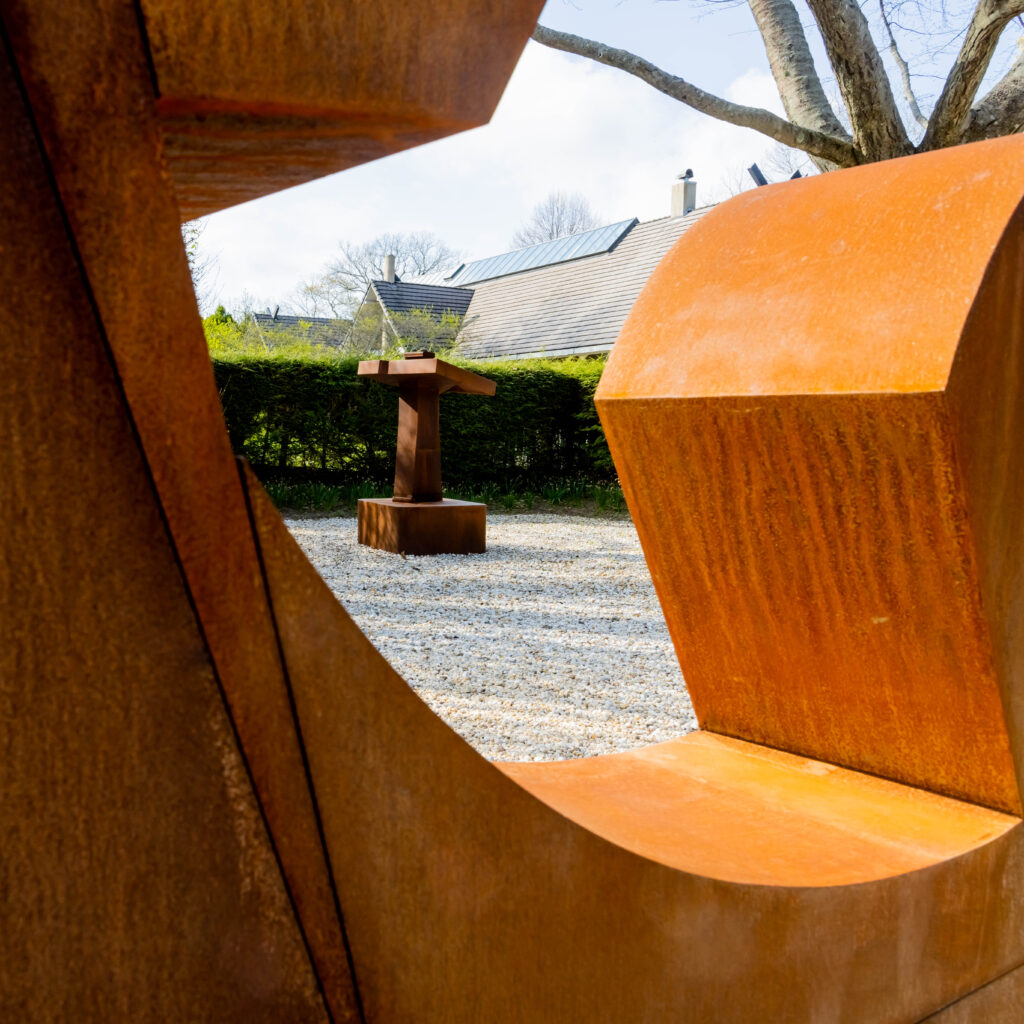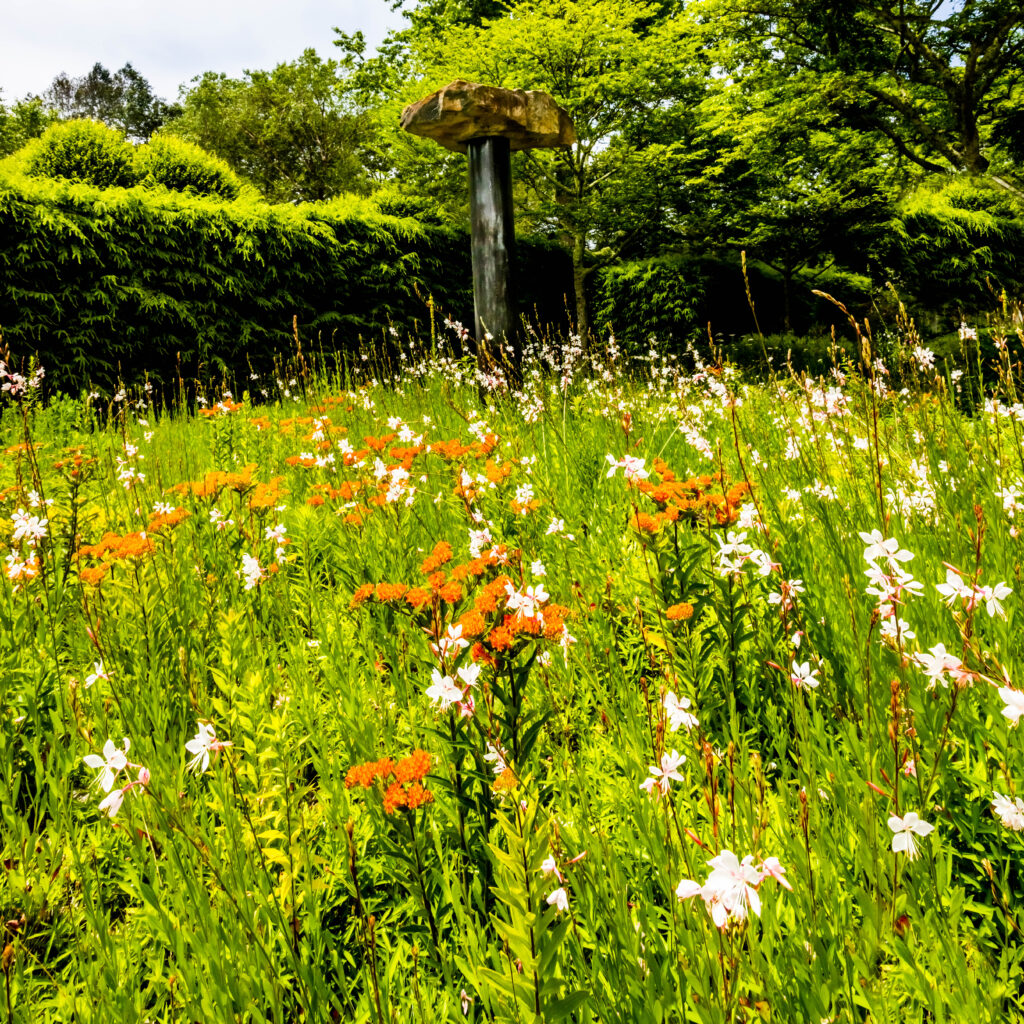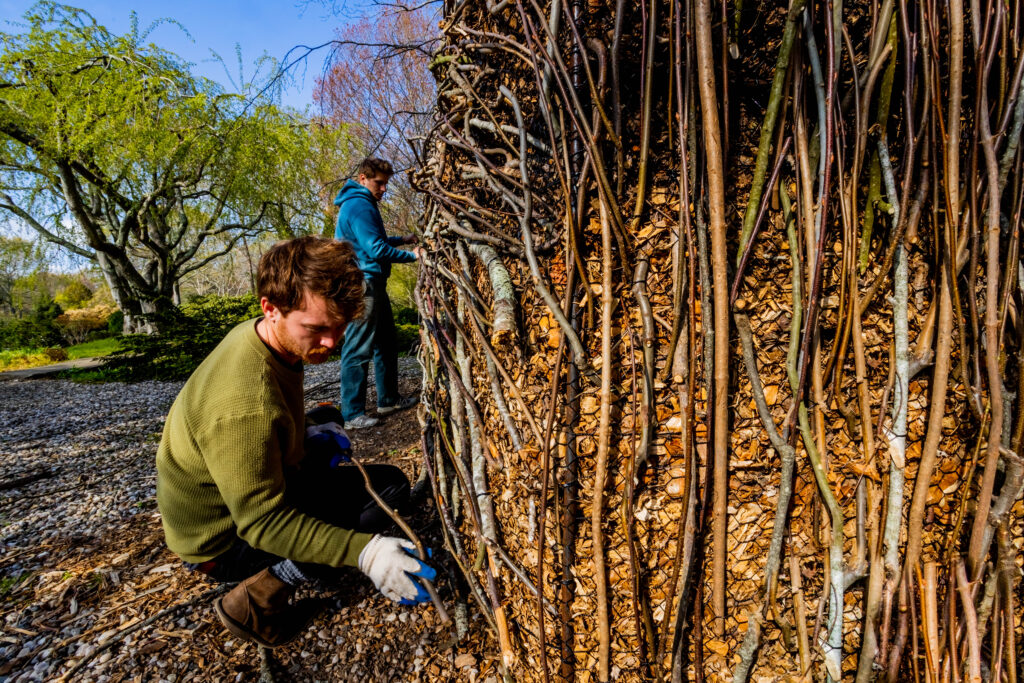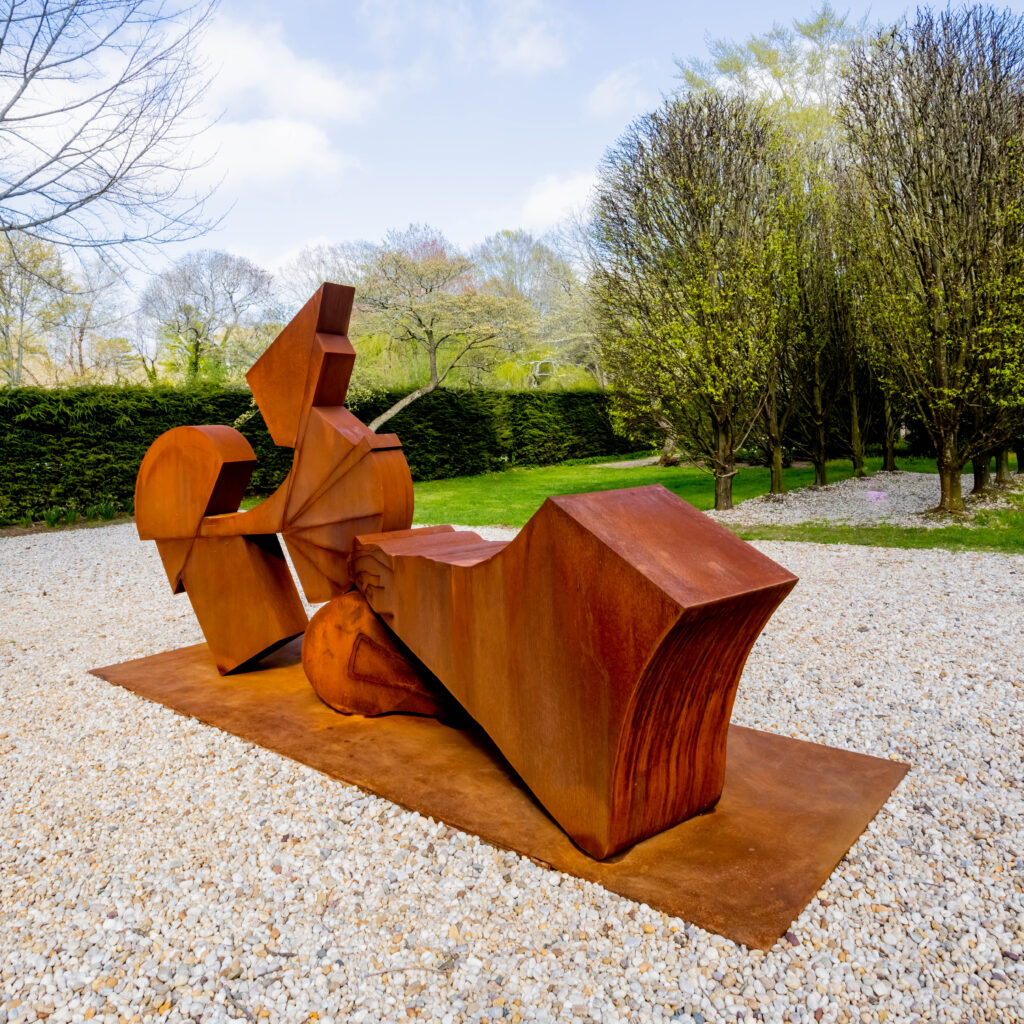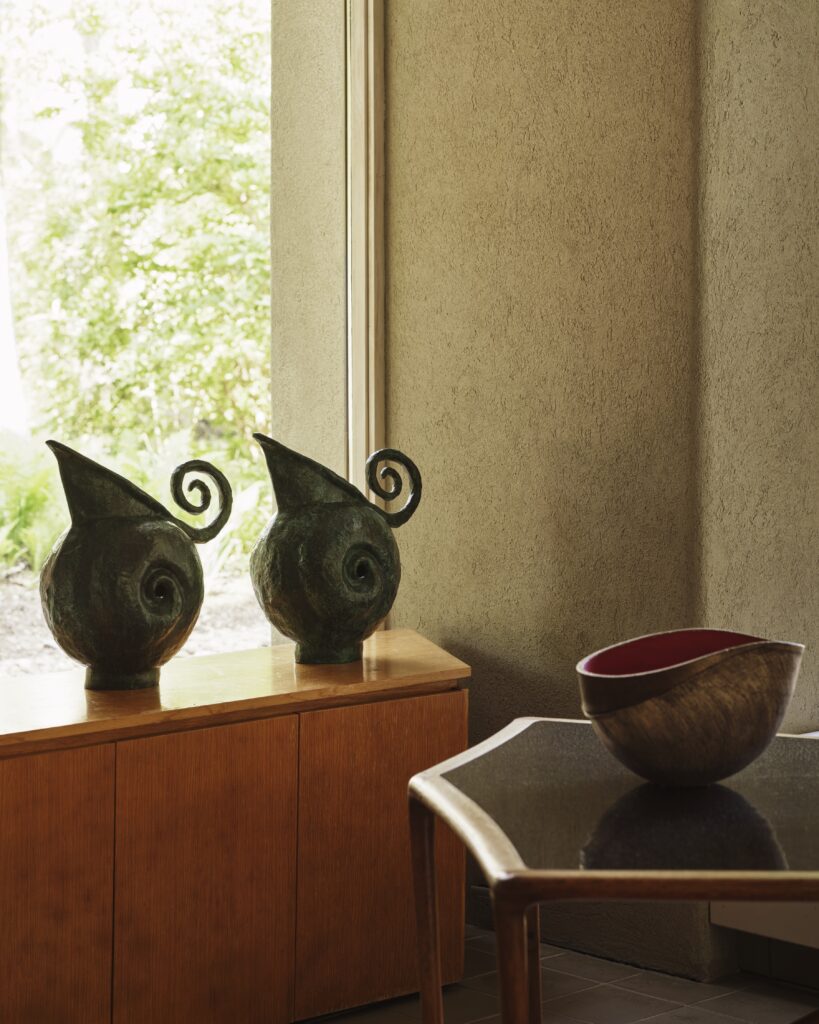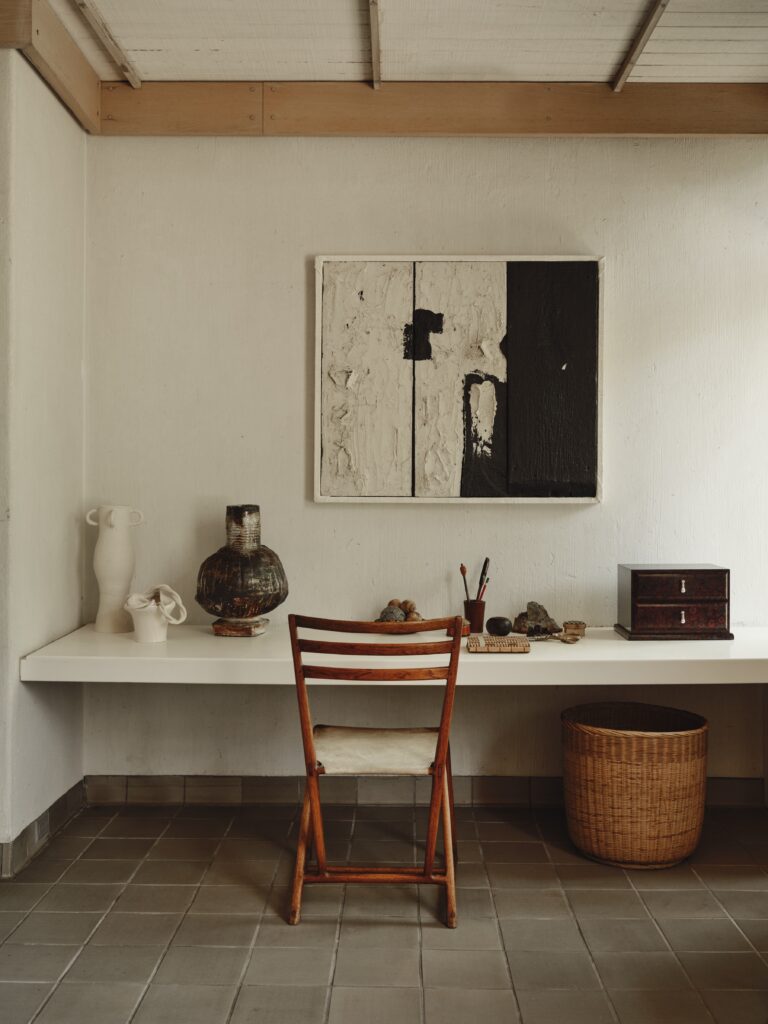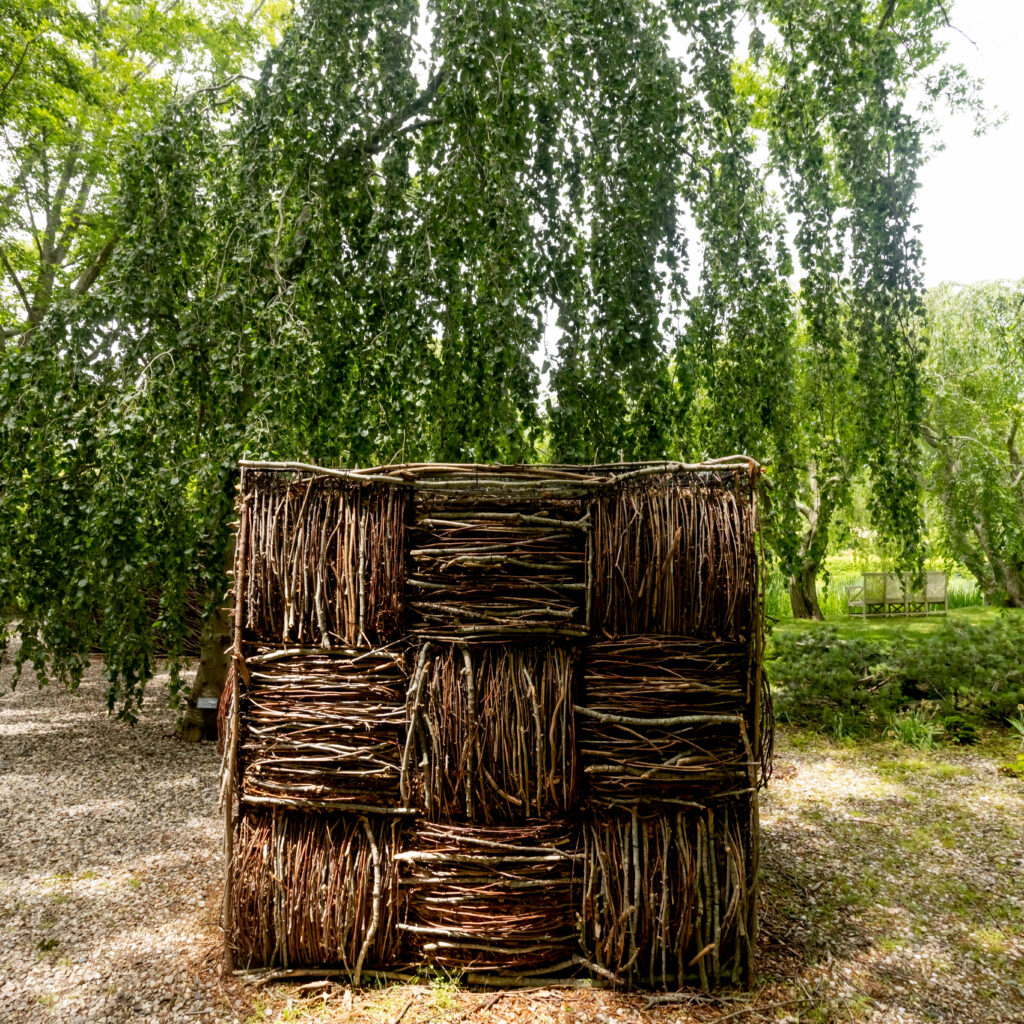
I never had the pleasure of meeting Jack Lenor Larson (1927-2020), but I have friends who have, and they told me a great deal about the man. Larson is very well known as a designer and tastemaker, often called ‘the most accomplished textile designer living,’ and he came to be the voice of the American home in the postwar years. However, to truly understand the man, one has to see his home where his love for Japan and his mastery of textures are given the ultimate expression. The American textile designer, author, collector, promoter of the crafts, and lover of gardens created the most spectacular home in East Hampton: his personal sanctuary and refuge, called LongHouse Reserve. I was hosted there last week for the first time.
Larson called himself a ‘weaver,’ traveling across the globe to learn and explore weaving techniques and skills—even as an already world-renowned designer. He opened his legendary textile business in Manhattan during the early 50s, specializing in windows and furnishing fabrics, and had an impact on many hotels, airports, and offices all over the country. Larson did the curtains for Eero Saarinen’s magnificent Miller House in Columbus, Indiana, the window treatments for the modernist Lever House in Manhattan, and introduced batik in the 60s in response to the rise of hippie culture. Throughout his life, Larson kept experimenting and moving with the culture and taste of the day; cotton and nylons, straw and bamboo, velvets, working with all kinds of yarn and fiber. This is where his greatness showed, in his ability to move with the zeitgeist. He thought about textiles like an architect, and taught Americans that textiles are the heart of the interior, the soul. Today, his groundbreaking modernist textiles can be found in many museum collections across Europe and the US.
The stories of Larson’s relationships with artists are told in the extensive collections of crafts, art, and garden sculptures. Dale Chihuly owed him his career because he advised him to focus on glass rather than on textiles. With Louis Kahn, he collaborated on the hangings of his modernist First Unitarian Church in Rochester. He must have had a great relationship Wharton Esherick, as his home contains the largest collection of furniture by the craftsmen outside of his own house/museum. He knew Frank Lloyd Wright, Marilyn Monroe, and many other celebrities who utilized his fabrics in their homes.
For the design of his four-story home, which I had the honor to visit, he commissioned modernist architect/craftsman Charles Forberg, who modeled it after the Ise Shrine in South of Japan, blessing the house with Japanese allure. While he bought the 16-acre property in 1975, it was not until 11 years later that he built the house. LongHouse Reserve is an enormous and ambitious project, with which Larson sought to inspire the visitors to think differently about living with art and design.
There is a lot to be learned from visiting the home and gardens of Jack Lenor Larson. You will learn how traveling the world is the only way to truly open your horizons by seeing how he was authentic in the way he lived with and loved the cultures, textures, and styles that came to inform his identity. Perfection has many faces, and craftsmanship has the power to bring affection and spirituality into the home. Living with arts is the key to the evolution of taste and for forging life larger than oneself. This is only the beginning—if you want to learn more, do not miss the memoire he published in 1998, Jack Lenor Larsen: A Weaver’s Memoir. This memoir along with the LongHouse Reserve will keep the legacy of Larson alive, moving with the time, just as he lived his life.
LongHouse Reserve is open to the public during the spring, summer, and fall.
